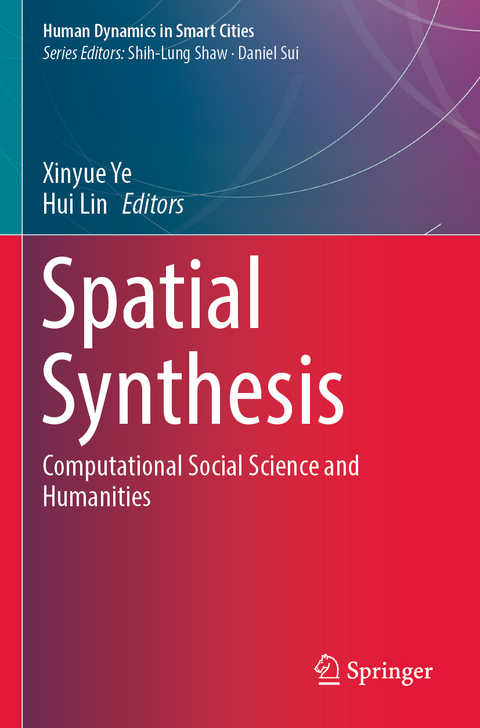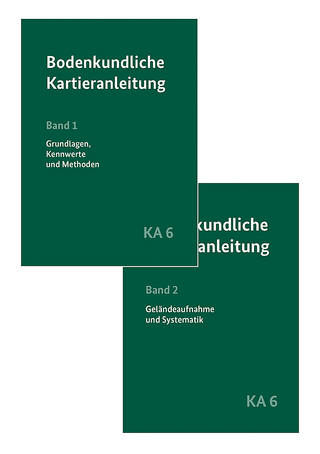
Spatial Synthesis
Springer International Publishing (Verlag)
978-3-030-52736-5 (ISBN)
This book describes how powerful computing technology, emerging big and open data sources, and theoretical perspectives on spatial synthesis have revolutionized the way in which we investigate social sciences and humanities. It summarizes the principles and applications of human-centered computing and spatial social science and humanities research, thereby providing fundamental information that will help shape future research. The book illustrates how big spatiotemporal socioeconomic data facilitate the modelling of individuals' economic behavior in space and time and how the outcomes of such models can reveal information about economic trends across spatial scales. It describes how spatial social science and humanities research has shifted from a data-scarce to a data-rich environment. The chapters also describe how a powerful analytical framework for identifying space-time research gaps and frontiers is fundamental to comparative study of spatiotemporal phenomena, and how research topics have evolved from structure and function to dynamic and predictive. As such this book provides an interesting read for researchers, students and all those interested in computational and spatial social sciences and humanities.
Dr. Xinyue Ye (Ph.D., University of California at Santa Barbara and San Diego State University, USA) is Associate Professor at the Department of Landscape Architecture and Urban Planning, Texas A&M University, College Station, USA. Dr. Ye integrates urban science and computational science towards smart cities and spatial social network research. He models the space-time perspective of socioeconomic inequality and human dynamics for applications in various domains, such as economic development, disaster response, transportation and land use, public health, and urban crime. He was elected chair of the American Association of Geographers (AAG)'s Regional Development and Planning Specialty Group in 2014. He also served as president of the International Association of Chinese Professionals in Geographic Information Science from 2016 to 2017. Since 2011, he has been serving as Associate Editor of Stochastic Environmental Research & Risk Assessment, a leading SCI journal in spatial and environmental statistical modeling. Dr. Ye has published over 150 journal articles. He won the national first-place research award from University Economic Development Association in 2011 and received the Regional Development and Planning emerging scholar award from AAG in 2012. Dr. Ye's work has been funded by the National Science Foundation, National Institute of Justice, Department of Commerce and the U.S. Department of Energy. Dr. Hui Lin (Ph.D., University at Buffalo, USA) is Professor and Dean at the School of Geography and Environment of Jiangxi Normal University (JXNU), Nanchang, China. He is also Emeritus Professor at the Department of Geography at the Chinese University of Hong Kong (CUHK). He was the founding director of Institute of Space and Earth Information Science of CUHK (2005-2019) and the founding president of International Association of Chinese Professionals in Geographic Information Sciences (CPGIS) in 1992. Dr. Lin's major research interests include environmental remote sensing, virtual geographic environments (VGE), and spatially integrated humanities and social sciences. He has authored or co-authored over 300 journal papers, 12 books and 1 atlas. He was honoured as guest professorships from universities in Australia, China, France, Germany, India, and USA. Dr. Lin received CPGIS Distinguished Scholar Award in 2015, the Outstanding Contribution Award from Asia Association of Remote Sensing (AARS) in 2009 and 2019, and the E. Willard and Ruby S. Miller Award from American Association of Geographers (AAG) in 2017. He was elected the academician of International Eurasian Academy of Sciences (IEAS) in 1995, Member of Scientific Committee of the International Center on Space Technologies for Natural and Cultural Heritage (WHIST), United Nations Educational, Scientific and Cultural Organization (UNESCO) in 2011, and Vice Chairman, China National Committee of International Society of Digital Earth in 2012.
Chapter 1. Xinyue Ye and Hui Lin: Research Agenda for Spatial Synthesis: Computational Social Science and Humanities.- Chapter 2. Di Hu: The China Family Tree Geographic Information System.- Chapter 3. Ping Zhang: GIS for Chinese History Research.- Chapter 4. Wei Pan: Digital Historical Yellow River.- Chapter 5. Yongming Xu: Visualizing Classic Chinese Literature.- Chapter 6. Hongwei Xu: Quantifying Spatial Variation in Aggregate Cultural Tolerance.- Chapter 7. Anrong Dang: Conservation of Cave-dwelling Village using Cultural Landscape Gene Theory.- Chapter 8. Jisheng Shi: Digitalized Enka-style Taipei.- Chapter 9. Tiyan Shen: Research progress on Spatial Demography.- Chapter 10. Haoran Yang: Complex network theory on high-speed transportation systems.- Chapter 11. Qisheng Pan: Economic Impact Analysis for an Energy Efficient Home Improvement Program.- Chapter 12. Jinkai Li: Exploring the dynamics of Carbon emission in China via spatial-temporal analysis.- Chapter 13. Renzhou Gui: Spatial Visualization and Analysis of the Development of High-paid Enterprises in the Yangtze River Delta.- Chapter 14. Zhipeng Gui: High performance spatiotemporal visual analytics technologies and its applications in big socioeconomic data analysis.- Chapter 15. Jianglong Chen: Demystifying the inequality in urbanization in China through the lens of land use.- Chapter 16. Kun Qin: Analyzing Spatial Patterns of Intergenerational Education Mobility in China.- Chapter 17. Xining Yang: Can Social Media Rescue Child Beggars.- Chapter 18. Bo Zhao: Spoofing in Geography.- Chapter 19. Bin Jiang: A Complex-Network Perspective on Alexander's Wholeness.- Chapter 20. Suhong Zhou: Spatial-temporal Behavior Analysis in Urban China.- Chapter 21. Jun Gao: Studies on tourists' city space images.- Chapter 22. Guoqiang Shen: Accessibility of Residential Houses to Community Facilities.- Chapter 23. Wei Tu: Uncovering Online Sharing Vehicle Mobility Patterns from Massive GPS Trajectories.-Chapter 24. Sulei Zheng: Application of Eye Tracking Technology in Humanities, Social Sciences and Geospatial Cognition.
| Erscheinungsdatum | 03.12.2021 |
|---|---|
| Reihe/Serie | Human Dynamics in Smart Cities |
| Zusatzinfo | XV, 454 p. 175 illus., 79 illus. in color. |
| Verlagsort | Cham |
| Sprache | englisch |
| Maße | 155 x 235 mm |
| Gewicht | 708 g |
| Themenwelt | Mathematik / Informatik ► Mathematik |
| Naturwissenschaften ► Geowissenschaften ► Geografie / Kartografie | |
| Schlagworte | Aggregate Cultural Tolerance • Big Socioeconomic Data Analysis • Carbon Emission in China • Cave-dwelling Village • Chinese History Research • classic chinese literature • Computational Social Science • digital humanities • Energy Efficient Home Improvement Program • GIS Geographical Information Systems • High-paid Enterprises • High-speed Transportation Systems • Intergenerational Education Mobility • spatial analysis • Spatial demography • Spoofing in Geography • Urban Informatics • Urbanization in China • Yangtze River Delta • yellow river |
| ISBN-10 | 3-030-52736-0 / 3030527360 |
| ISBN-13 | 978-3-030-52736-5 / 9783030527365 |
| Zustand | Neuware |
| Haben Sie eine Frage zum Produkt? |
aus dem Bereich


